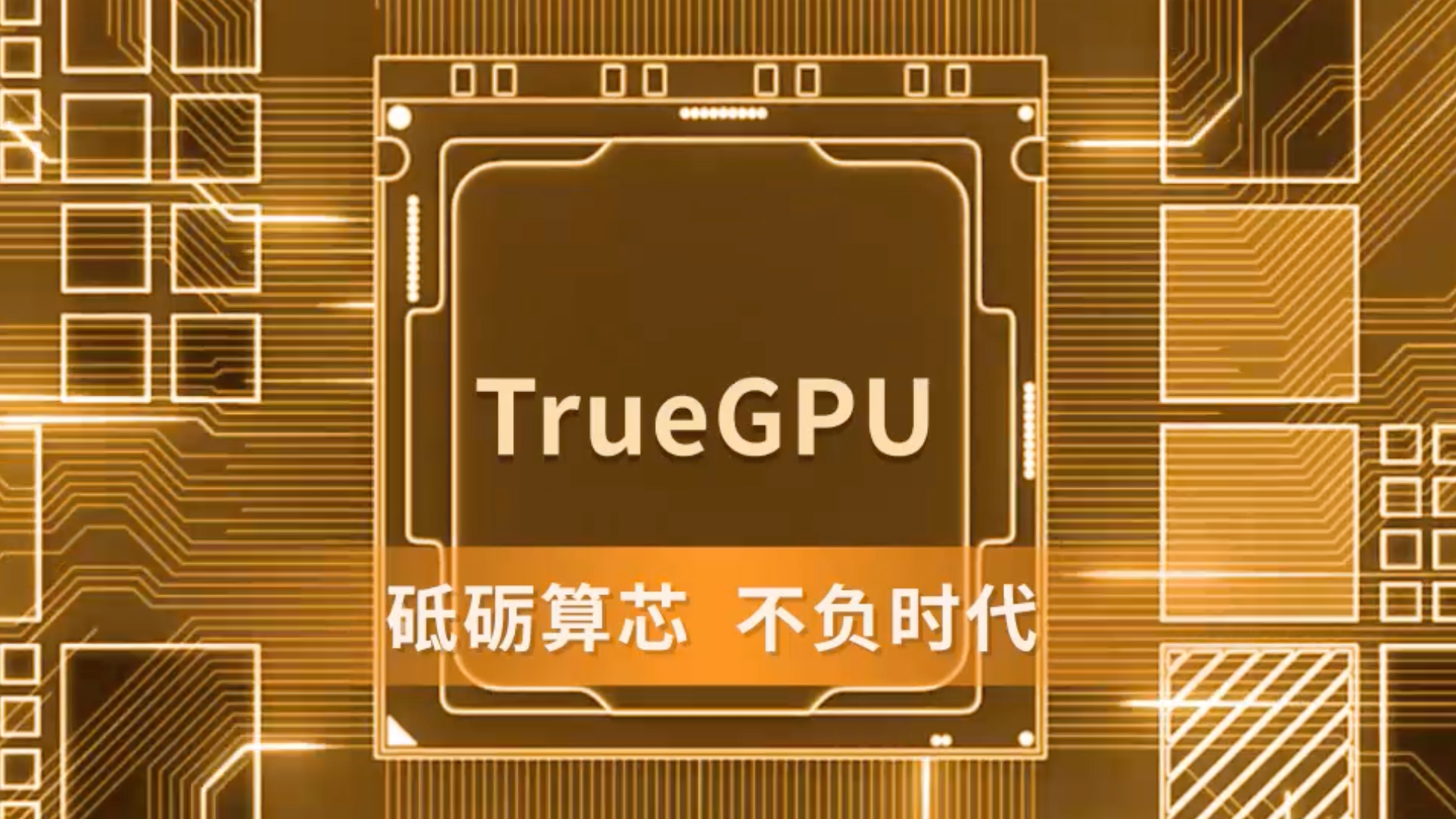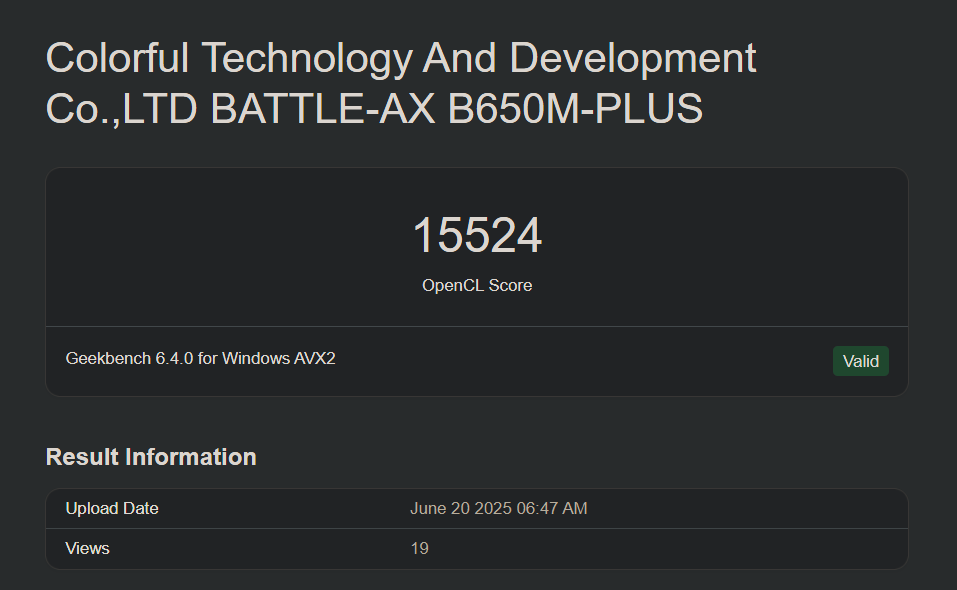China's first 6nm gaming GPU matches 13-year-old GTX 660 Ti in first Geekbench tests — Lisuan G100 surfaces with 32 CUs, 256MB VRAM, and 300 MHz clock speed
Too early to draw any conclusions.

The first traces of the Lisuan G100, remarked as China's first domestically produced 6nm GPU, have surfaced on Geekbench. In an OpenCL benchmark, the G100 is accompanied by an AMD Ryzen APU in Windows 10, though the performance isn't remarkable. Since this is an early result from developing drivers and silicon, we shouldn't consider this single benchmark as reflective of the GPU's potential performance.
Lisuan Technology announced the power-on of its G100 GPU last month. Based on their in-house TrueGPU architecture, it is manufactured using a 6nm-grade process, likely from SMIC. The G100 is claimed to offer performance comparable to Nvidia's budget RTX 4060, which has now been superseded by the RTX 5060. Exact specifications were not revealed, but the Geekbench listing indicates 32 Compute Units, 256MB of VRAM, and a 300 MHz clock speed, at least for this respective benchmark. If the specifications are accurate, this is an entry-level SKU, which could explain the graphics card's relatively low performance.
It's impossible to determine the number of FP32 units since we are not aware of how the GPU's execution unit subsystem is configured. In addition, the 256MB figure is likely a driver misreport, while the low clock speed probably stems from the firmware/driver or the silicon itself. The takeaway is that we cannot form a judgment based on the GPU's current state.

The test bench features a Ryzen 7 8700G alongside 64GB of DDR5-4800 memory atop the Colorful Battle-AX B650M-Plus motherboard. With this setup, the Lisuan G100 scored 15,524 points in OpenCL, ranking it among the slowest GPUs in Geekbench's public repository. GPUs with similar results include the 13-year-old GTX 660 Ti, Samsung's Xclipse 940 on the Exynos 2400, which is a mobile SoC, and the Radeon R9 370 (GCN 1.0).
Lisuan Technology says the first G100 chips have powered on, and this benchmark further proves their claims. The GPU has likely achieved tape-out and is believed to be in the process of risk production. Mass production is anticipated to begin late this year or early next year. That being said, significant progress is still required to reach usable performance and stability levels.
Moore Threads, which is also an indigenous GPU manufacturer, struggles with similar driver problems, not to mention issues with game optimizations. As Intel's Arc has proven, achieving a stable and robust GPU ecosystem, particularly for gaming, is a significant uphill battle for newcomers. We can expect to learn more from the company as development advances.
Follow Tom's Hardware on Google News to get our up-to-date news, analysis, and reviews in your feeds. Make sure to click the Follow button.
Get Tom's Hardware's best news and in-depth reviews, straight to your inbox.

Hassam Nasir is a die-hard hardware enthusiast with years of experience as a tech editor and writer, focusing on detailed CPU comparisons and general hardware news. When he’s not working, you’ll find him bending tubes for his ever-evolving custom water-loop gaming rig or benchmarking the latest CPUs and GPUs just for fun.
-
uplink-svk People see this and laugh. I see it and am scared 💩less. Same goes for Russia. We (Europe) need Russia and China for practically everything vital, they need us for fancy stuff like chips and ideas. Once they get their own version of stuff we provide them with, in a decade or two, they won't need us and state we're currently in will leave us destitute.Reply
We Europe really need to become independent, or we'll go down the path of dinosaurs. These are the signs... -
1_rick I'm not sure why sites report these stories as if they're real. Oh, the maker says, it's a good as a 4060, but it benchmarks at a fraction of that speed, and this keeps happening.Reply -
Ryan_257 Reply
Yeah, pretty good performance for not having as much experience as AMD and NVIDIA in GPU design. It really is a matter of time before parity is achieved and possible them passing us up.uplink-svk said:People see this and laugh. I see it and am scared 💩less. Same goes for Russia. We (Europe) need Russia and China for practically everything vital, they need us for fancy stuff like chips and ideas. Once they get their own version of stuff we provide them with, in a decade or two, they won't need us and state we're currently in will leave us destitute.
We Europe really need to become independent, or we'll go down the path of dinosaurs. These are the signs... -
Ryan_257 Reply
They'll keep at it, nothing to lose.1_rick said:I'm not sure why sites report these stories as if they're real. Oh, the maker says, it's a good as a 4060, but it benchmarks at a fraction of that speed, and this keeps happening.
They've done well with other tech from the West - cars, jets, space, pharma... GPUs are next. -
bit_user Reply
In this case, the results cited aren't flattering. Also, they're reporting on Geekbench scores, in the Geekbench repo. So, that is at least backed by some actual data, rather than mere claims.1_rick said:I'm not sure why sites report these stories as if they're real. Oh, the maker says, it's a good as a 4060, but it benchmarks at a fraction of that speed, and this keeps happening.
A key detail that's missing is whether this is just another licensed IP (like Moore Threads) or whether it was entirely homegrown. -
bit_user Reply
I wouldn't discount either their progress or their potential, but I think it's telling how the mighty Intel has struggled to catch the GPUs of AMD and Nvidia. So, no. I don't expect them to achieve anything close to parity, in the near future. Remember that neither Nvidia nor AMD are standing still - they're both moving as fast as they can, which makes it incredibly hard for someone to actually catch them!Ryan_257 said:Yeah, pretty good performance for not having as much experience as AMD and NVIDIA in GPU design. It really is a matter of time before parity is achieved and possible them passing us up.
But, they don't actually need parity. For now, they just need something that's a usable alternative to the Western-based products. -
ivan_vy Reply
this, these GPUs just need to be 'good enough' for what the are made for, TVs, set top boxes, android consoles, airport and restaurant banners, millions of devices and revenue that will not be in west companies; for anything else (AI, surveillance, military, power users) they can always smuggle while they wait for 'good enough' alternatives.bit_user said:But, they don't actually need parity. For now, they just need something that's a usable alternative to the Western-based products. -
BFG-9000 Reply
Will they have Win XP drivers? Many of those Chinese Cybercafes are still using XP and even YlmF (the company behind YlmF OS/StartOS which was a very XP themed Ubuntu) switched to updating pirated "Ghost Windows XP" instead, for 7 years now.ivan_vy said:these GPUs just need to be 'good enough' for what the are made for
https://ia600101.us.archive.org/19/items/YLMFWinXPSP3v1EditionCHS/YLMF%20WinXP%20SP3%20v1.0%20Edition_001c.pngI guess their copy wasn't 'good enough' so they switched to continuing security updates for the original. Maybe that also explains all the fake GPUs made from e-waste too, using genuine used Fermi chips. As good as Kepler should at least be better than those, right? -
reaperofchange What will happen when china passes us? Well we will just play their game of copy the tech. Maybe when china does pass us they can start doing their part in the world of trying to help keep order so people can live without fear of terror attacks. But most likely they will just continue to be obsessed with beating everyones records in everything just to act like children about it that havent grown up. No humbleness just straight to the ol gradeschool na na na na na na we are better than you because of (insert irrelivant subject here) justto feel like theyre worth something more than others. They dont understand that everyones equal and noones more important just because they come from somewhere, we are all from earth. This current gloating they do on everything isnt really upsetting in how they think it does. Its more showing their true character and how they fail to prove they are better people than any other nation, especially the usa the ones they are actively obssesive compulsive disorder in essense trying to do what we can do to make us proud of them or something i guess, but they think stealing the tech is at all honorable or anything to be proud of. Yeah they may build it, but the only quality coming out of there is the stuff that foreign countries either contract out to them to manufacture, thus the foreign deal maker will be paying for the quality material, and requires it to be built with a specific standard of quality, and outside that, basically they can only produce barely works i wanna say crap but even that seems to have longer and better uses than something coming from there thats not from a deal for a product they make for a foreign company. And then they just steal the tech like there will be no consequence. Oh there will be though. May not be today, but itll come back 100 fold and really nip them.Reply